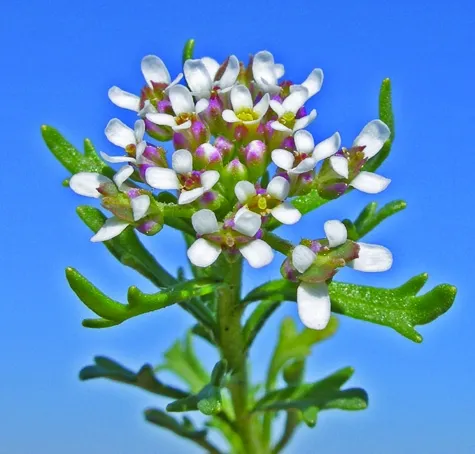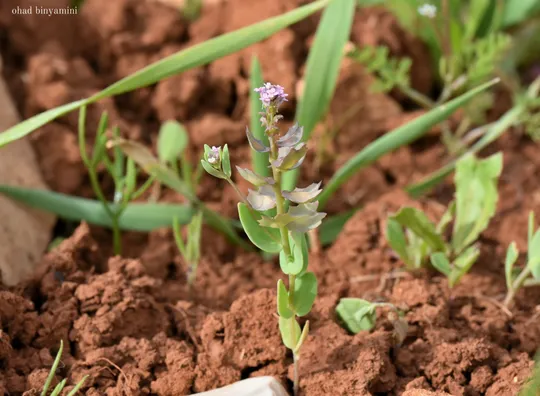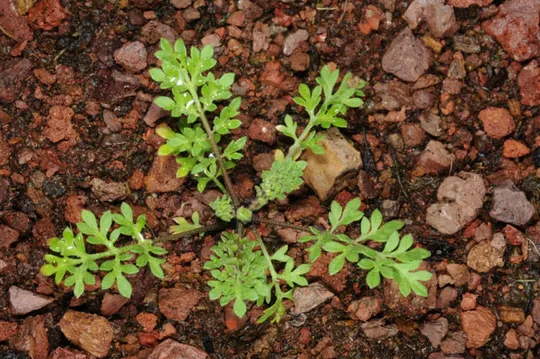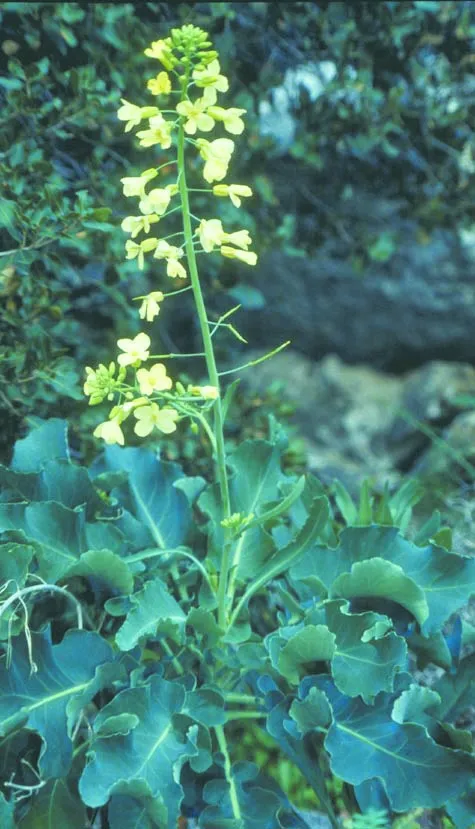Lesser Shepardscress
Teesdalia coronopifolia
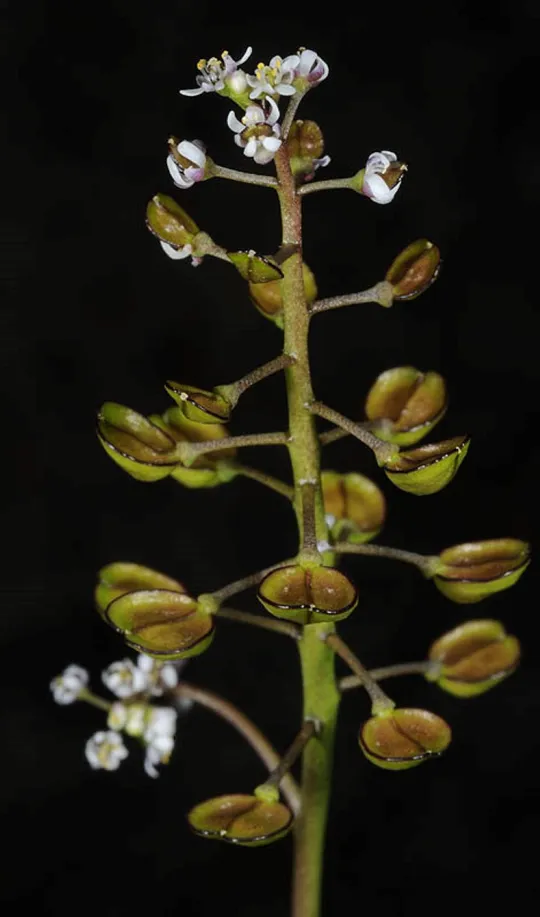
Teesdalia coronopifolia
grows at only two sites in Israel: the northern Golan Heights, in the Odem Forest
near Tel Kats’a and at the foot of Mount Hermon on Mount Keta near Nimrod.
There is a single record of T. coronopifolia
from Wadi Ar'ar on the Hermon at an altitude of 1400 meters.
Woodland and grassy herbaceous clearings on basaltic soil in shaded habitats in the northern Golan; on sandstone in sunny moist uncultivated land on Mount Keta (Nimrod) at the foot of Mount Hermon. Both sites are at altitudes of 1000- 1100 meters with an annual precipitation of 900-1100 mm.
The genus Teesdalia has
only two annual species, found in Europe and in the Mediterranean Basin. The
genus is close to the genera Thlaspi, Capsella and Iberis. In all of them, the fruit is dorsally
flattened and the seam between the capsule valves is located in the center of
the capsule; in Teesdalia, however, the top of the fruit has no
style and the fruit base (not just its top) is notched.
Teesdalia coronopifolia
is included in the Erophila group in the Brassicaceae (Cruciferae)
family, an ecological group of minute plants that bloom in the
middle of winter. In low habitats such as the Carmel and the Philistean Plain (Judean
Foothills) these plants bloom as early as January, but in high habitats, such
as the northern Golan Heights they bloom in February-March. The following species
also belong to this group – Thlaspi perfoliatum,
Alyssum simplex, Erophila
minima and Clypeola jonthlaspi. The flowers of most of the species in
the group are white (or pale yellow), and the plant grows rapidly at low temperatures
(a characteristic of the Brassicaceae), and already blooms when
it reaches a height of 5-15 cm. Most are facultative self-pollinators, which is considered an adaptation to frequent rainstorms
and to a scarcity of pollinators. In addition, the reduction from six stamens to
four in T. coronopifolia also indicates
self-pollination. At this time of the season, the surrounding vegetation is
still low, and they can take advantage of this to flower at low statures.
·
Teesdalia coronopifolia grows on two sites in the northern Golan
Heights and the foot of Mount Hermon. One (Mount Keta) was
found in 1968 and since then has been randomly checked and its
population was found to be stable; the second (Mount Odem) was found
in 1987 and since then T. coronopifolia has been found at the site several times. No
data is available on its population size.
·
The
Odem Forest is part of a nature reserve whereas Mount Keta is only
formally part of the Mount Hermon Reserve, and in fact, earthworks and
demolition work take place at the site.
A field survey should
be conducted to search for Teesdalia coronopifolia sites
in the northern Golan Heights and to estimate its population sizes. Its growing
conditions should be examined at a central site in the environs of the northern
Golan Heights, where its populations should be monitored and its seed bank checked.
Teesdalia coronopifolia
is widely distributed throughout the Mediterranean Basin and Central Europe: it
grows in all the Maghreb countries, in the northern Mediterranean countries and
eastwards to the Balkans, the Aegean Islands, Cyprus and Western Turkey.
Interestingly, T. coronopifolia is absent from southern
Turkey, Syria and northern Lebanon (the veracity of the fragmentation is doubtful;
it may be the result of its lack of visibility). In the Levant, besides for the
Northern Golan Heights T. coronopifolia appears only in
southern Lebanon from Beirut to Marǧ-ayun.
T.
coronopifolia is noted as an immigrant species in North America. Its
distribution in Central Europe is also attributed to an invasion in the middle
ages, following the clearing of forests and the spread of agriculture.
Teesdalia
coronopifolia is a small annual plant that grows in the country at only
two sites in the northern Golan. It is a northern Mediterranean species, whose
global southern limit is in the Golan. The two sites in Israel are subject to
different environmental conditions, and its preferred habitat in our region
should be studied.
כהן ע. ושמידע, א. 1989. טיסדליה שסועה. טבע וארץ ל"א: 6.
Current Occupancy Map
| 1000 squre meter pixel | 5000 squre meter pixel | 10000 squre meter pixel | |
|---|---|---|---|
| number of observations | 0 | 0 | 0 |
| in total pixels | 0 | 0 | 0 |
| Family | Brassicaceae |
| Classification | On the endangered species list |
| Ecosystem | Mediterranean |
| Chorotype | Mediterranean (Euro – Siberian) |
| Conservation Site | Mount Keta on the foot of the Hermon |
| Rarity |
1
5
6
|
|---|---|
| Vulnerability |
0
0
4
|
| Attractiveness |
0
0
4
|
| Endemism |
0
0
4
|
| Red number |
1
3.2
10
|
| Peripherality | N |
| IUCN category | DD EW EX LC CR EN VU NT |
| Threat Definition according to the red book | Vulnerable |
 Based on:
Based on:
